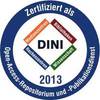|
PDF, English
Download (4MB) | Terms of use |
Abstract
Tumor-associated macrophages (TAMs) contribute to tumor progression and foster the immunosuppressive tumor microenvironment. Several immunotherapeutic approaches to target TAMs are being developed, including the blockade of monocyte recruitment to the tumor site in order to reduce the number of pro-tumorigenic TAMs. Chemokine (C-C motif) ligand 2 (CCL2) and semaphorin 3A (Sema3A) secreted by tumor cells have been found to play crucial roles in the attraction of monocytes via the respective receptors C-C chemokine receptor type 2 (CCR2) and neuropilin 1 (NRP1) expressed on monocytes. In this project, we selected fully human CCL2- and NRP1-targeting antibody fragments by means of phage display and further characterized them in the immunoglobulin 1 (IgG1) format. We demonstrated antigen specificity by ELISA, surface plasmon resonance spectroscopy and flow cytometry. Since we could not show blocking of the NRP1 – Sema3A interaction by the NRP1-specifc antibodies, these antibodies were not developed further. In contrast, we observed blocking of the CCL2 – CCR2 interaction by flow cytometry and confirmed the blockade of intracellular CCR2-dependent signaling mediated by our lead candidate anti-CCL2 antibody. Moreover, we demonstrated reduced CCL2-dependent migration of monocytes in the presence of the CCL2-specific antibody. In addition, since recent reports showed that systemic administration of anti-CCL2 antibodies led to increased CCL2 production, we aimed to develop a system that allows for local and intratumoral delivery of the CCL2-neutralizing antibody fragment. To achieve this, we designed chimeric antigen receptor (CAR) constructs that enable simultaneous expression of the CAR and soluble secretion of our anti-CCL2 lead candidate. We demonstrated cell-surface expression of the CAR molecule and functionality of the CAR T cells. However, although simultaneous expression of the CAR and secretion of anti-CCL2 scFv was successfully proved for transfected HEK293T cells, we failed to detect scFv secretion from primary human T cells transduced with the same constructs. We assume that the amount of secreted scFv from T cells was below the detection limit of our assays. Thus, future work is warranted that shows that CAR T cells are able to produce sufficient amounts of anti-CCL2 scFv within the tumor and that this way of scFv delivery is superior to systemic administration routes.
| Document type: | Dissertation |
|---|---|
| Supervisor: | Angel, Prof. Dr. Peter |
| Place of Publication: | Heidelberg |
| Date of thesis defense: | 20 February 2020 |
| Date Deposited: | 03 Jun 2025 11:23 |
| Date: | 2025 |
| Faculties / Institutes: | The Faculty of Bio Sciences > Dean's Office of the Faculty of Bio Sciences |
| DDC-classification: | 570 Life sciences 600 Technology (Applied sciences) |
| Controlled Keywords: | Monoklonaler Antikörper |









